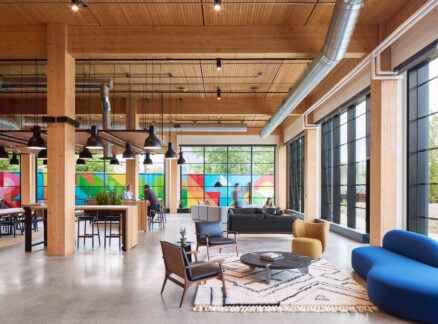January 1, 1970
Portable Outdoor Furniture Allows Us to Live, Work, and Play Outside
For companies and institutions of all sizes looking for a way to carry on despite COVID-19, the past year has involved figuring out how to make the most of outdoor space. With extra room between patrons, employees, or guests, as well as greater air circulation, outdoor working, dining, and learning have been proven to […]
For companies and institutions of all sizes looking for a way to carry on despite COVID-19, the past year has involved figuring out how to make the most of outdoor space. With extra room between patrons, employees, or guests, as well as greater air circulation, outdoor working, dining, and learning have been proven to cut down on virus transmission but pose a new design challenge.
The same qualities that have made Fermob’s outdoor seating options a hit in cafés parks, and terraces around the world has also made them a lifesaver for companies facing this brand-new need. These outdoor furniture solutions, including the renowned 130-year-old Bistro chair, manufactured by Fermob, have opened up novel avenues of business and jump-started a trend that the brand has seen building in the U.S. for decades.
“People are social animals, we want to be able to share space outside,” explains Leslie Thompson, COO of Fermob USA. Human nature, combined with new public health rules to combat the coronavirus, make spending time outside the activity du jour and have created a perfect storm for interest in Fermob’s iconic steel furnishings.
“Corporations have always offered occasional outside seating, but with COVID-19 we have seen a larger investment and a long-term recognition of the value of outdoor space for the health and well-being of employees,” she says.
The range of interest in the brightly colored lightweight furnishings is astonishing. From restaurants increasingly dependent on outdoor dining, to corporations moving social areas and cafeterias outside, suburban shopping malls that are testing the waters for outdoor shopping, and even outdoor classrooms for colleges like Washington University in St. Louis and the University of Denver, as well as K-12 schools like Ben Franklin HS, a nationally recognized magnet school in New Orleans, the demand is diverse and growing.
As institutions adapt to life lived outside, Fermob’s products are in many cases the obvious choice. “Their flexibility and convenience are ideal for highly-programmed, activated commercial corridor. Plus, they’re durable enough for high-traffic areas and priced so that it’s not a big deal if we need to buy more,” says Ben Donsky, principal of Agora Partners, a real estate consulting, investment, and development group that specializes in placemaking in urban environments.
Additionally, Fermob’s steel furniture is a sustainable and recyclable choice. “We manufacture products made of steel, using over 96 percent recyclable material, with zero waste for our painting line, including water.” Says Bernard Reybier, CEO of Fermob.
Thompson says that while many of these changes have been driven by health concerns, it’s part of a larger trend towards livable communities that has been going on for some time. The pandemic, and its economic fallout, is only accelerating interest in living, working, and playing outside. Architects, designers, planners, and entrepreneurs are reimagining everything from restaurants to office parks and Fermob’s designs, because they are moveable, attractive, and durable are often the first choice for those transitions.
Recent Viewpoints
Viewpoints
METROPOLIS Celebrates Earth Day 2025





